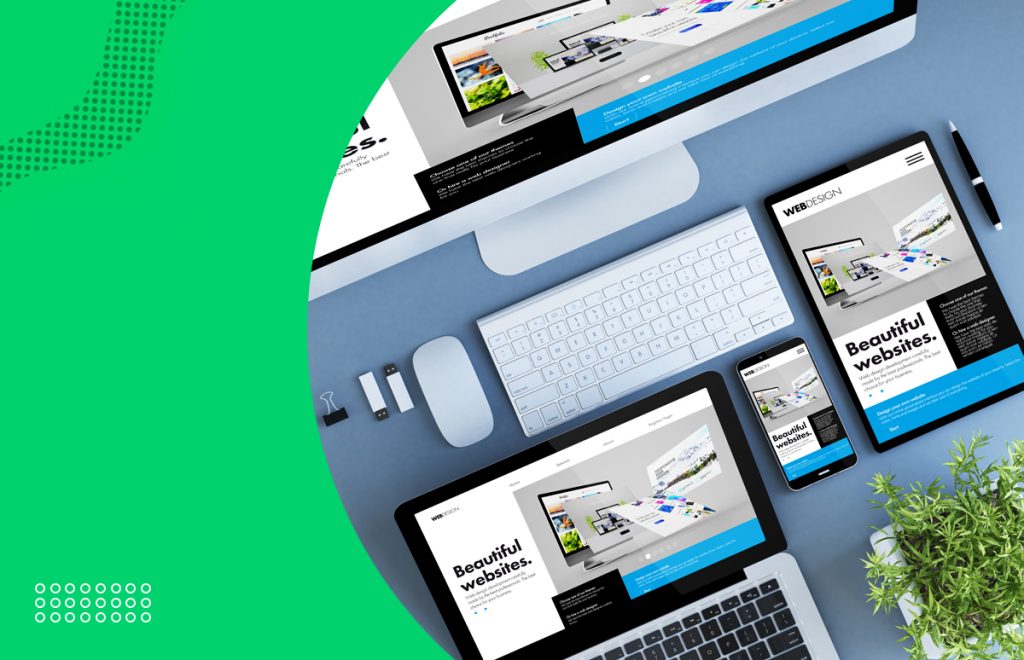Why Professional Website Design is a Key Factor in Your Marketing Strategy
Why Professional Website Design is a Key Factor in Your Marketing Strategy
Blog Article
The Ultimate Guide to Modern Web Site Design Trends
In the ever-evolving electronic landscape, modern-day web site design patterns play an important duty fit individual experience and engagement. From the increase of minimal design principles that focus on simpleness to the influence of strong typography in defining brand identification, each component adds to a cohesive online presence. The emphasis on receptive and mobile-first methods, together with cutting-edge microinteractions, further boosts use. Moreover, the growing concentrate on lasting website design practices reflects a commitment to environmental obligation. These trends jointly elevate important questions about the future of effective website design and what it implies for customers and businesses alike.
Minimalist Design Concepts
Minimalist style principles stress the concept that less is much more, supporting for simplicity and performance in visual communication. This strategy remove unneeded aspects, concentrating instead on essential elements that share the designated message properly. By focusing on clearness, minimalist layout improves customer experience, enabling site visitors to browse internet sites effortlessly.
Core tenets of minimal style include using ample white space, which creates a feeling of equilibrium and company. This adverse space not just guides the viewer's interest to key aspects but likewise cultivates a soothing visual environment. Additionally, a limited color scheme is usually employed, making use of single plans or soft shades to keep visual communication and stop frustrating the individual.
Typography plays a crucial duty in minimalist layout, where understandable fonts are picked for their simpleness and performance in interacting web content. Eventually, minimal layout concepts cultivate a focused setting that motivates customers to engage with the content, enhancing the total efficiency of modern-day site layout.
Vibrant Typography Choices
Embracing strong typography selections has ended up being a specifying characteristic of modern-day site style, as it effectively catches focus and conveys solid messaging. Developers are increasingly making use of typography not merely as a functional element but as a key aesthetic element that improves the general visual and customer experience.

Furthermore, the association of bold typography with minimalist style principles enables striking contrasts, improving readability while preserving aesthetic appeal. Using whitespace around vibrant message even more highlights its value, making sure that the message resonates with the target market.
As digital landscapes become much more competitive, leveraging bold typography enables brand names to distinguish themselves and leave a long-term perception. The mindful selection of font styles and their application can evoke emotions, develop tone, and drive activity, making strong typography a vital device in modern website style. Inevitably, it is an effective means to improve narration and make sure that vital messages are not only seen however additionally felt.
Responsive and Mobile-first Style
Receptive and mobile-first style has emerged as a crucial principle in modern web site development, reflecting the boosting dependence on smart phones for accessing on the internet web content. As user habits changes in the direction of mobile browsing, developers have to focus on developing experiences that adapt seamlessly across various screen dimensions and resolutions.
A receptive design guarantees that a site automatically changes its format, images, and performance based on the device being used. This technique improves user experience by offering constant navigating and readability, irrespective of whether the visitor gets on a mobile phone, desktop, or tablet computer computer system. In addition, mobile-first style advocates for developing websites at first for smaller displays, subsequently scaling up to larger display screens. This method urges a more structured and reliable layout process, concentrating on essential material and capability first.
Executing receptive and mobile-first concepts not only deals with customer preferences but likewise straightens with search engine optimization (SEO) techniques. Major search engines, like Google, focus on mobile-friendly internet sites in their rankings, making it essential for companies to adopt these style methods. In a competitive digital landscape, embracing mobile-first and receptive layout is not just a choice; it is crucial for ensuring ease of access and involvement with a varied target market.
Involving Microinteractions
Microinteractions play a crucial function in enhancing customer engagement and general website experience, particularly in the context of mobile-first and responsive style. These refined layout components offer instant feedback to individuals, making interactions a lot more intuitive and enjoyable. Examples include button computer animations, notice informs, and packing signs, which not only guide customers yet additionally create a sense of link with the user interface.
Incorporating appealing microinteractions can dramatically improve functionality by reducing cognitive load. When users obtain auditory or aesthetic feedback upon carrying out actions, such as clicking a button or submitting a type, they feel much more positive in their selections. This cultivates a smoother navigating experience, ultimately increasing user retention.

As website design trends continue to evolve, the relevance of microinteractions can not be overemphasized. They work as the refined yet effective touchpoints that change regular communications into remarkable experiences, thereby boosting the overall see this here effectiveness of modern-day website design.
Sustainable Internet Style Practices
Sustainable internet style methods are ending up being progressively vital as the digital landscape expands and ecological issues rise. Programmers and developers are recognizing their obligation to produce websites that not just offer user demands however likewise decrease environmental influence. This strategy incorporates a number of key approaches.
Firstly, maximizing energy intake is extremely important. Web sites should be created to load promptly and effectively, which reduces web server power usage and enhances customer experience. Methods such as image compression, decreasing HTTP requests, and utilizing contemporary coding techniques contribute significantly to this objective.
Second of all, picking green organizing suppliers is critical - website design. Lots of organizing firms are now powered by renewable resource sources, making it possible for sites to operate in a much more see this here lasting fashion. This option mirrors a commitment to decreasing carbon impacts
Additionally, taking on a minimalist layout can enhance sustainability. Fewer aspects on a page bring about much less data transfer, which not only speeds up packing times yet additionally saves resources.
Lastly, promoting digital accessibility guarantees that websites reach a bigger audience without unnecessary bloat, lining up customer experience with ecological responsibility. By integrating these sustainable practices, internet developers can add favorably to both user engagement and the earth's health.
Verdict
In summary, modern site design patterns stress the combination of minimal principles, bold typography, and receptive style to enhance customer experience. Adopting these patterns is necessary for developing impactful electronic experiences that resonate with customers in an additional resources increasingly competitive online landscape.
In the ever-evolving digital landscape, contemporary internet site design trends play a critical duty in shaping individual experience and engagement. By prioritizing quality, minimal layout improves individual experience, permitting visitors to browse web sites easily.
Eventually, minimal design principles cultivate a focused setting that encourages customers to engage with the material, enhancing the overall performance of modern-day web site layout.Microinteractions play a critical function in boosting customer involvement and general website experience, specifically in the context of mobile-first and receptive layout.In summary, modern website style trends stress the assimilation of minimal principles, strong typography, and receptive style to boost customer experience.
Report this page